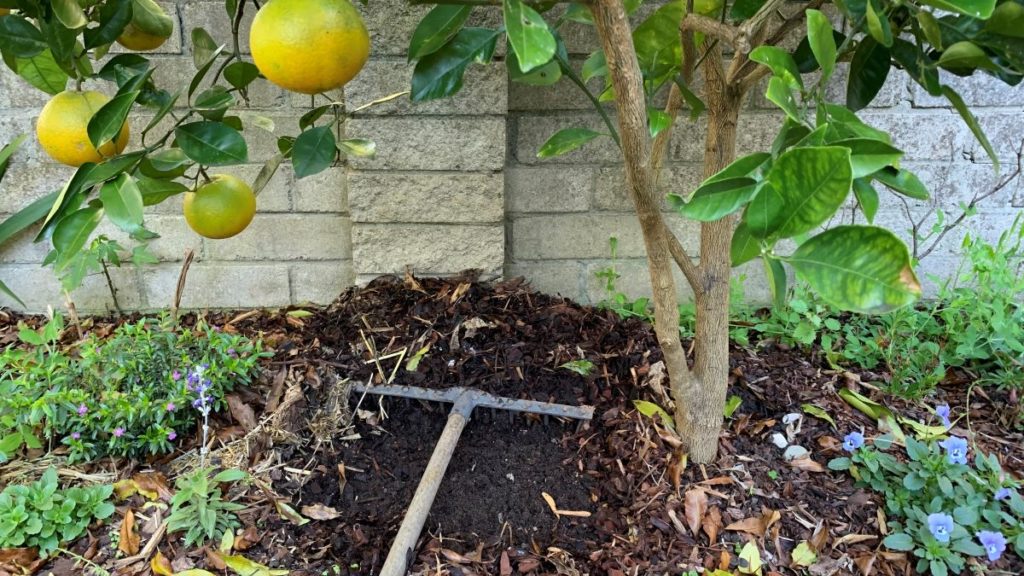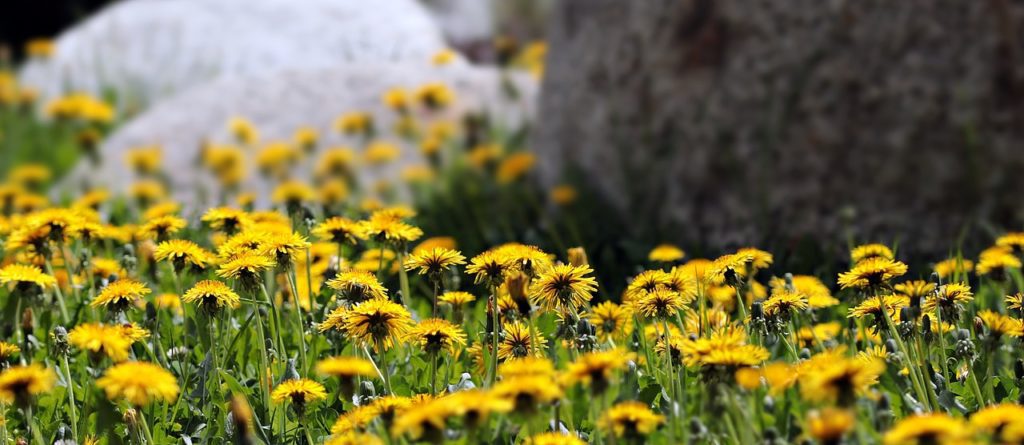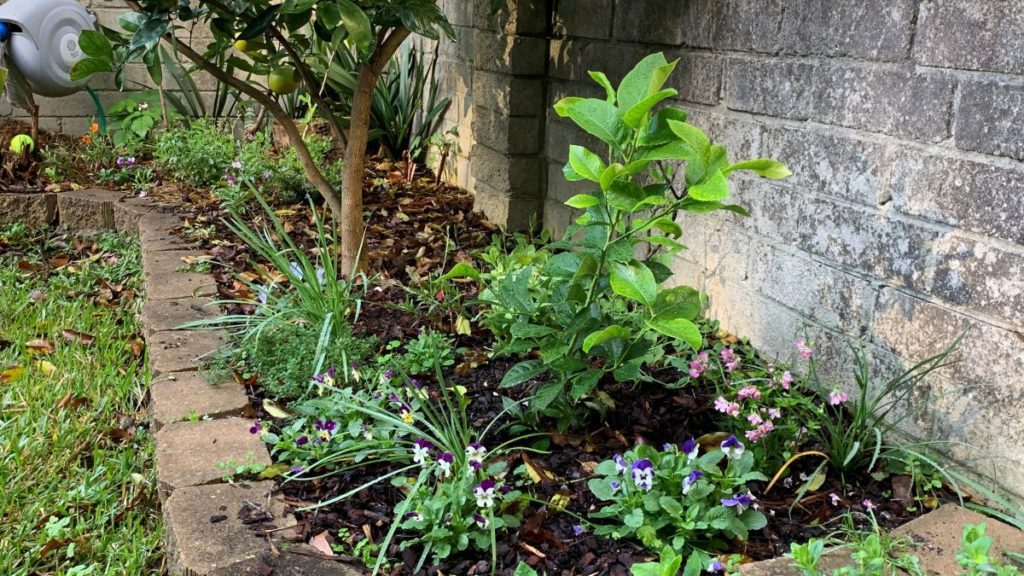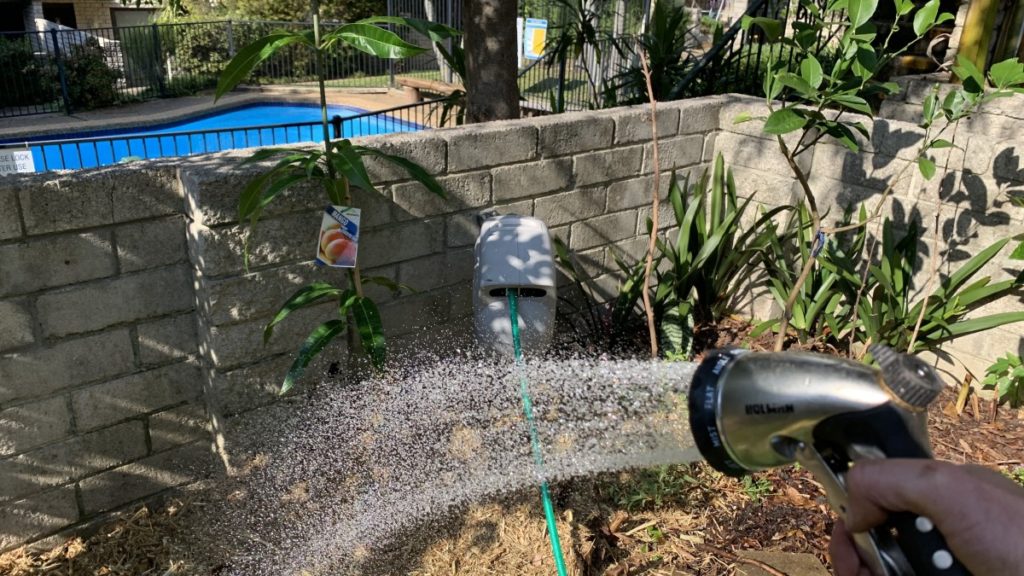Pulling weeds out before mulching is the best idea because even with a thick layer of mulch, many weeds can still work their way through. For the best chance of a weed free garden bed, pull weeds out by hand or use a garden hoe to dig them out by the roots before laying mulch.
How to remove weeds before mulching
When adding mulch to a new garden bed or topping up old beds with new mulch, weeding is the first step. Here is the easy steps to keep your beds weed free and mulch correctly.

1. Move old mulch to expose the weeds
Moving old mulch out of the way can be an easy way to get to the base of the weeds. Using a rake, simply move mulch back from weeds so you can see the stems.
The old mulch does not have to be removed completely from the garden bed but moving it back slightly will make it easier to see the weeds. Old mulch is fantastic for your garden beds or adding to compost as it is partly broken down so will add nutrients to your soil.
2. Pull the large weeds out by hand
Wearing garden gloves, grab the large weeds low down near the soil level. Pulling the weed out by the base, near the roots will help to get the whole weed out of the ground without leaving any roots.
Roots of invasive weeds such as dandelion can re-sprout if they are not pulled out completely.

3. Use a hoe to remove small weeds
A garden hoe is the perfect tool to remove small weeds from the soil. Small winter weeds such as grasses will lift out easily when a hoe is gently scraped out of the ground. Be careful around established trees and shrubs that you do not disturb the roots.
Citrus trees have small roots which sit near the surface of the soil which can be damaged easily with a hoe. For these trees, it is best to remove all weeds by hand if you can.
4. Layer newspaper (optional)
To keep weeds away for longer, sheets of newspaper can be laid on the soil. Place up to 6 layers of newspaper over the soil to prevent weed seeds from getting sunlight and sprouting through.
This is an optional step but will work well between tomato plants as well as perennial shrubs and trees.
For more on this check out my previous article here: Mulching tomatoes with newspaper.
5. Layer 2-3 inches of mulch
After the weeds have been removed, layer 2-3 inches of your favorite mulch on top of the soil. This could be tree mulch, bark, sugar cane, hay or straw. Make sure all of the soil is covered thoroughly to prevent light from getting through to the weed seeds.
Use a rake to even out the mulch layer and keep the mulch at least 2-3 inches away from any plant stems to prevent rot.

6. Water the mulch
The final step is to water the mulch into place. Use a sprayer nozzle to cover the mulch with water. This will settle the mulch into place and make it obvious where there are thin layers. You can then add extra mulch into any holes to prevent weeds.

Why you should remove weeds before mulching
Removing weeds before mulching will reduce the chance that any tough weeds will grow through. Weeds like couch grass can survive underneath mulch, spreading through their rhizomes and taking over your garden bed under the mulch.
Before you know it, your whole garden bed will be full of weeds again and you will have another job to pull them all out. Removing weeds before mulching will also make it easier to see all of the weeds.
After mulch has been applied, it will be more difficult to see and remove the weeds.
Will weeds die if I cover them with mulch?
Some weeds will die if they are covered with mulch and the light is blocked. They will stop photosynthesizing and will starve.
Other weeds that are more rampant including chickweed, cover, couch grass and dandelion can survive under mulch, spreading their roots deeper and growing through the mulch. The best method is to remove the weeds by hand before laying mulch.
How do you kill weeds before laying mulch?
The best way to kill weeds before laying mulch is to remove them by hand. While poisons can be used I like to keep my garden eco-friendly and avoid this. Boiling water can be poured on soft winter weeds like clover and it can kill off the weeds naturally.
Use a garden how or small trowel to remove weeds completely including the roots to prevent them growing back.
Can I just put mulch over weeds?
Technically you can just put mulch over weeds but you will risk larger or stronger weeds growing through. It is likely that you will kill over smaller, weaker weeds but large weeds will flourish and can take over the space.
The best method is to remove the weeds first. This will mean less competition for your plants as weeds won’t be stealing the nutrients or water in the soil.
How deep should mulch be to prevent weeds?
Once the weeds have been removed, adding a 2-3 inch layer of mulch will be enough to prevent weeds. Adding layers of newspaper first will provide extra protection and prevent weeds growing for longer.
Newspaper will break down over time and eventually need to be replaced.
The mulch will also need to be topped up to 2-3 inches every 3-6 months to keep the soil protected. This depth will allow rain to penetrate through to the soil and to the plant roots.
Do you have to pull weeds out before mulching? | Summary
Pulling weeds out before mulching is the best way to make your life easier in the long run. Leaving weeds under mulch usually means that will work their way back through the mulch and you will need to weed anyway. A layer of newspaper will prevent weeds for longer if you really hate weeding.
Happy mulching.
I am an accredited practicing dietitian, experienced gardener and a dedicated cook. I love writing and sharing my experience so you can learn from my successes and mistakes.
